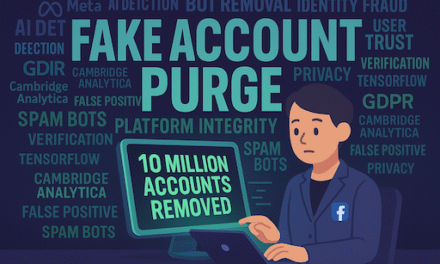Unprecedented Data Access: ICE and Medicaid
The recent revelation that the U.S. Immigration and Customs Enforcement (ICE) is obtaining unprecedented access to Medicaid data has sent ripples across the tech industry, privacy advocacy groups, and governmental agencies. According to a 2025 report, ICE’s entry into the Medicaid database—one that contains sensitive health information of over 75 million Americans—poses significant concerns about data privacy and civil liberties. Industry analysts suggest that such access not only sets a concerning precedent but also raises questions about the robustness of data security protocols surrounding sensitive personal information.
As data becomes increasingly crucial to government and business operations, the stakes in safeguarding personal information have never been higher. The U.S. tech and security sectors stand at a crossroads where privacy concerns meet national security objectives, foreshadowing a potential clash that could redefine regulatory standards for years to come. How did we arrive at this contentious intersection, and what does it mean for the future of data privacy?
Background: Navigating the Data Security Maze
Historically, data privacy in the United States has been a controversial topic. The Health Insurance Portability and Accountability Act (HIPAA) of 1996 was among the first key regulations to set standards for sensitive patient data protections. However, advancements in technology and data analytics outpaced regulatory frameworks, creating loopholes for governmental access. The Electronic Privacy Information Center (EPIC) and American Civil Liberties Union (ACLU) have consistently lobbied for comprehensive privacy protections, often facing opposition from federal agencies prioritizing national security.
In the past decade, the landscape has evolved significantly. Companies like Palantir Technologies and Clearview AI have developed sophisticated tools that harness data for purposes ranging from social network analysis to image recognition. Their technologies have been utilized by federal agencies despite privacy advocates’ concerns. This trajectory underscores a clear trend: technology enabling powerful data analytics is outstripping the controls in place to protect individual privacy.
In this context, the recent development granting ICE access to Medicaid data is precipitated by a broader intersection of technology, security, and regulation. The motivations behind ICE’s push for data access are rooted in a drive for efficiency in immigration enforcement. With an increasing backlog of cases and rising geopolitical tensions, ICE argues that access to Medicaid data is critical for identifying undocumented individuals who may pose security risks. Proponents argue that stronger data protocols will mitigate privacy concerns, a notion met with skepticism from privacy advocates.
Technical Analysis: Inside the Data Access Architecture
Central to the debate is how ICE gains access to Medicaid data and the nature of the technology enabling this remarkable access. At the core of the data gateway lies advanced data analytics and integration services, pulling from distributed databases across states. Medicaid data, stored in decentralized systems across the United States, follows multiple data standards—X12 for electronic transaction sets and HL7 for clinical and administrative data.
ICE’s integration leverages APIs designed for healthcare interoperability, particularly the Fast Healthcare Interoperability Resources (FHIR) standard. FHIR provides a framework for exchanging electronic health records. While FHIR’s capabilities for modularity and adaptability are well-regarded, it was not originally intended for use in law enforcement. This raises critical concerns about architectural repurposing, highlighting a potential weakness when consumer-focused frameworks are extrapolated into law enforcement domains.
Data security measures comprise a combination of access controls and encryption protocols. The Data Encryption Standard (DES) and Advanced Encryption Standard (AES) provide baseline protection, yet questions persist about the adequacy of these measures when subjected to aggressive, state-sponsored intrusion techniques, as seen in recent cybersecurity breaches showcased during the SolarWinds incident.
Moreover, specific performance benchmarks, such as latency in data retrieval and the load balancing across multistate servers, dictate the effectiveness of real-time decision-making by ICE operatives. The scale at which data is processed, analyzed, and redacted for use by non-health agencies introduces technical complexities that require an enhanced focus on maintaining data integrity and preventing unauthorized exposure.
Industry Impact: The Broader Ramifications
The ramifications of ICE’s unprecedented access echo across multiple industries. In the immediate term, tech companies heavily invested in data security are experiencing market volatility. Companies like IBM, which leads in enterprise data solutions, and cybersecurity specialists such as Fortinet and Check Point Software Technologies are seeing fluctuations in stock due to concerns about potential backlash.
In the long run, these developments could catalyze a transformation in the healthcare data management sector. The market may witness a surge in demand for more secure and customizable data solutions, prompting innovation and investment, particularly in encryption algorithms and secure data sharing frameworks.
Startups specializing in federated learning, such as Owkin and Duality Technologies, which focus on decentralized data processing that does not compromise privacy, may find increased interest from venture capitalists. Traditional sectors like healthcare IT and law enforcement tech suppliers might see shifts as competitive dynamics adapt to these heightened security and privacy expectations.
Globally, the impact of U.S. governmental access to private health data may influence how international markets view American technology, potentially challenging export control regulations and compelling foreign nations to reconsider data trade agreements with the U.S.
Future Landscape: Charting the Data Privacy Path
Looking forward, it is expected that the next six months will see heightened debate over data privacy laws, with hearings and testimonies from tech and healthcare executives. Within a year, Congress may propose amendments to enhance consumer protection within the framework of the American Data Privacy Protection Act (ADPPA), slated to address loopholes in existing legislation.
In three years, emerging technologies like blockchain and quantum computing may redefine data access protocols. Ethereum-based projects, notably those advocating decentralized identity management, could offer robust solutions. Market analysts project an expanded demand for stronger regulatory compliance solutions, approaching an estimated market value of $1.5 billion by 2028.
These changes could encourage the emergence of new business models exemplifying user-centric data sovereignty. Opportunities abound for platforms designed to empower individuals with greater control over their data, similar to Apple’s recently touted privacy-focused feature sets.
Expert Perspectives: What the Industry Says
Industry experts offer a multifaceted view. Teresa Carlson, President of Splunk, emphasizes that data privacy is paramount for maintaining public trust—not just within tech but across all business sectors. Meanwhile, Marietje Schaake, a former European Parliament Member known for her advocacy on tech regulation, draws parallels to the EU’s General Data Protection Regulation (GDPR), highlighting the balance between privacy rights and national interests.
The Facebook-Cambridge Analytica data scandal serves as a historical analogue, suggesting that when privacy breaches occur, they can result in substantial fallout. Companies involved in similar previous incidents pad their brands and processes with stronger privacy commitments, leveraging lessons from the past to steer toward a more ethical path.
Strategic Recommendations: Navigating Forward
For technical teams, adopting zero-trust architectures and enhancing data encryption standards should be a priority. Business leaders must align strategic goals with privacy-first policies, ensuring compliance with evolving laws. Investors should consider opportunities in startups committed to data security and privacy, while developers might focus on learning and mastering cutting-edge cryptographic techniques.





